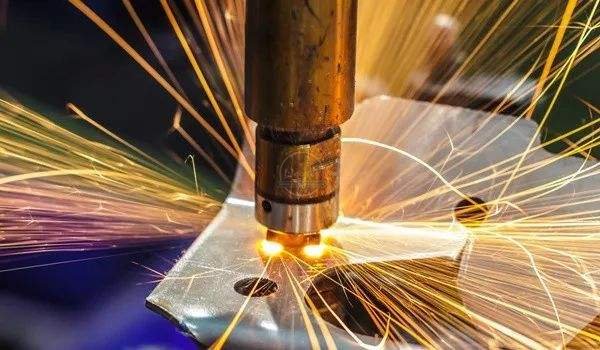
Welding principle
Laser welding is a technology that radiates high intensity laser to metal surface and makes metal melt, recrystallize and form weld through the thermal coupling between laser and metal.According to the thermal mechanism of laser welding, it can be divided into two types: thermal conductivity welding and deep fusion welding. Thermal conductivity welding is applied to package welding or micro-nano welding of precision parts.In the process of deep fusion welding, the hole effect is similar to electron beam welding, and the weld with larger depth and width is formed.
Common laser types
CO2 gas laser
This kind of laser works in CO2 gas, output 10.6 m wavelength laser, according to the laser excitation structure, divided into two kinds: transverse flow and axial flow.Although the output power of the cross-flow CO2 laser has reached 150kW, the beam quality is poor and it is not suitable for welding.Axial CO2 laser has good beam quality and can be used for welding aluminum alloy with high laser reflectivity.
YAG solid state laser
The working medium of the laser is ruby, neodymium glass and neodymium-doped yttrium aluminum garnet, with the output wavelength of 1.06 m laser.YAG laser is more easily absorbed by metal than CO2 laser and is less affected by plasma.
YLR fiber laser
This kind of laser is based on optical fiber, doped with different rare earth ions, the output wavelength range is around 1.08 m, is also optical fiber transmission.The double cladding fiber structure is adopted to increase the pump length and pump efficiency, thus greatly increasing the output power of the fiber laser.

Welding characteristics
Laser welding of metals is characterized by concentrated heating, large depth-width ratio of weld and small deformation of welding structure. The disadvantages of this laser welding method are as follows:
(1) The small diameter of laser focusing spot leads to high requirements for workpiece welding assembly precision. Generally, the assembly clearance and the amount of misalignment should be less than 0.1mm or 10% of the plate thickness, which increases the implementation difficulty of the complex THREE-DIMENSIONAL welding structure.
(2) Laser deep fusion welding requires the laser to have high power.Deep fusion welding depends on the double threshold of laser power density and line energy, both of which restrict the weld pool behavior in the welding process and ultimately reflect the weld forming characteristics. For the process optimization of full penetration weld, the weld forming characteristics can be defined.
(3) Strong metal vaporization is generated under the action of high-power laser, and the metal vapor/photoplasma cloud formed with keyhole effect in the welding process affects the absorption of laser energy by aluminum alloy, leading to the instability of deep fusion welding process, and the weld is prone to produce defects such as pores, surface collapse and edge bite.
(4) Laser welding has fast heating and cooling speed, and the hardness of welding seam is higher than that of arc. Due to the alloy element burning loss in welding, the alloy strengthening effect is affected.
● High quality AKJ1530 CO2 laser cutting machine
● ATC CNC Router with a horizontal spindle
● High quality AK30F fiber laser marking machine
● High quality AK20F laser fiber marking machine
● Big news: we're building a new factory
● Polish customer purchased AKM1530 high quality CNC engraving machine
● Heavy duty ATC CNC router with horizontal spindle AKM2030C
● Acctek exhibition footprint
● Cost-effective fiber laser cutting machine AKJ1530F1
● ACCTEK cnc router wishes everyone a Merry Christmas
Get a Free Quote Now!
Useful Link
Recommend Machine
Big discount

Headquarters: 3-1007, Minghu Plaza, No. 777 Minghu West Street,Jinan City / Branch: A2-1-1802, Hanyu Jingu, High-tech Zone, Jinan City
Factory: No. 3 Zone A, Lunzhen Industrial Zone,Yucheng City , Shandong Province
Copyright © Jinan AccTek Machinery Co.,Ltd